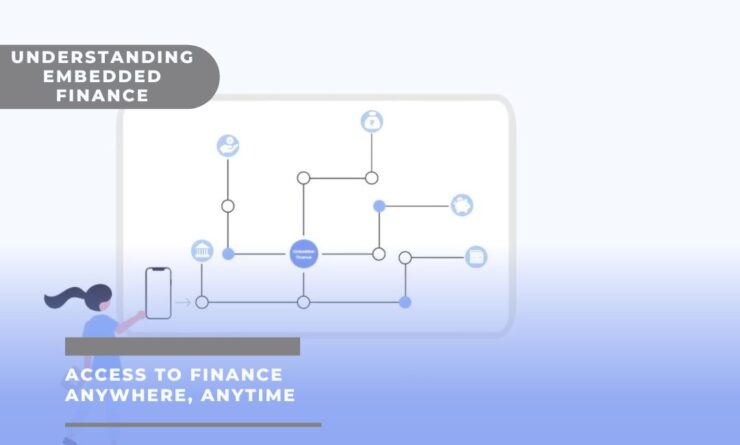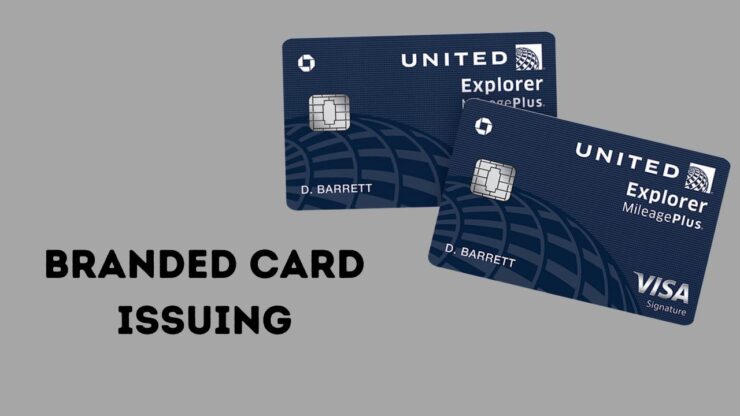By allowing seamless access to financial goods and services within non-financial platforms and experiences, embedded finance marks a paradigm shift in the financial sector. Embedded finance is transforming how we interact with money, from making payments through social networking applications to getting customized insurance advice while shopping online. In this post, we will discuss embedded finance, its effects on individuals and companies, and its potential to change the financial environment as we now know it.
What is Embedded Finance?
The integration of financial capabilities, services, and goods into non-financial platforms, programs, and experiences is referred to as embedded finance. Users may access financial functionality without having to go to conventional financial institutions thanks to the seamless supply of financial services inside the ecosystem of already-existing enterprises.
Consider embedded finance as the financial framework that keeps a variety of sectors afloat. Offering loans, insurance, or investment services via a mobile app is a more complicated option than just integrating payment processing capabilities into an e-commerce platform. The lines between the financial and non-financial industries are blurred by embedded finance, giving customers and companies alike a seamless experience.
Examples of Embedded Finance
1. Embedded Payments
To provide a seamless payment flow within an app or platform, payment infrastructure is integrated, which is referred to as embedded payments. The first financial service to be included in non-financial product experiences were payments. Today, they are a crucial component of the value proposition of any e-commerce app or SaaS platform, with end users regularly intuitively utilizing this function.
Embedded payments enable complex use cases such as in-game purchases in video games, payroll automation software, e-wallet integration in e-commerce applications, payment via the ERPs of educational institutions, subscription-based payments for SaaS, and more. To learn more you can visit website and get more detailed information about similar solutions and custom development of new ones.
2. Embedded Insurance
Previously, after investing time, money, and effort researching and purchasing the products, a client desiring to insure a new purchase would have to go through the time-consuming process of discovering and collecting the best insurance package they could find.
Insurance products may now be found and added to a transaction with a single click, removing the requirement to interact with a broker or insurance agent and essentially eliminating the need to comb through options from numerous insurers.
By incorporating embedded insurance, clients can confidently make purchases, knowing that their assets are safeguarded. This new paradigm has simplified the insurance experience, making it more accessible and user-friendly. Whether it’s insuring a new gadget, a vehicle, or any other valuable item, embedded insurance has transformed the way clients protect their assets, providing a hassle-free and efficient solution.
Furthermore, embedded insurance offers a heightened level of convenience and peace of mind. By integrating insurance seamlessly into the transaction process, clients no longer have to worry about potential coverage gaps or delays in obtaining the necessary protection. The instant availability of insurance options ensures that clients can immediately secure coverage for their purchases, mitigating any potential risks.
Moreover, embedded insurance often provides a more tailored and personalized approach. Through advanced algorithms and data analysis, insurance providers can offer customized policies based on the specific product being purchased. This means that clients receive insurance coverage that is specifically designed to address the unique risks associated with their new acquisition. Whether it’s extended warranties, damage protection, or theft coverage, embedded insurance can cater to the specific needs of each client and their purchase.
The integration of embedded insurance also brings benefits to businesses. By offering a seamless insurance experience, companies can enhance customer satisfaction and loyalty. Clients are more likely to return to businesses that provide a streamlined and hassle-free process for securing insurance. Additionally, companies can leverage embedded insurance as a value-added service, differentiating themselves from competitors and attracting new customers.
3. Branded Card Issuing
The customer and staff benefits of branded cards are numerous. Customers like using their preferred companies’ credit cards for their purchases. Employee-branded cards promote expenditure restraint and automate busywork.
Customer Benefits
- Brand Loyalty: Customers who are already fans of a particular company or brand appreciate having a credit card associated with that brand. It fosters a sense of loyalty and affiliation.
- Enhanced Rewards: Branded cards often come with rewards programs tailored to the brand’s products or services. Customers can earn points, cashback, discounts, or exclusive offers when they use their branded cards for purchases.
- Exclusive Perks: Branded cards may offer additional perks such as free shipping, early access to sales or new products, extended warranties, or concierge services, which can enhance the overall customer experience.
- Seamless Integration: Branded cards can be seamlessly integrated into loyalty programs, allowing customers to earn points or benefits not only through purchases but also by engaging with the brand through other means like referrals or social media interactions.
Challenges and Considerations
Embedded finance offers a lot of benefits, but it also has its share of difficulties and things to think about. Due to the processing of sensitive user data necessary for the integration of financial services, privacy, and data security are major problems. To protect user data and maintain trust, tight regulatory compliance, and strong security measures must be in place.
The confusing regulatory climate is another difficulty. The incorporation of financial services onto non-financial platforms poses issues with consumer protection, compliance, and licensing. To guarantee that integrated financial solutions meet industry requirements and offer a secure and dependable user experience, stakeholders must negotiate various legal frameworks.
Considerations like interoperability and standardization are crucial. To facilitate smooth integration across various platforms and providers, uniform data formats, protocols, and interoperable systems are required as embedded finance develops. Establishing these standards will require extensive industry cooperation.
Looking Forward
A fundamental change in the financial sector, embedded finance, enables the seamless integration of financial services into our daily lives. Finance might undergo a radical change as a result of the convergence of the financial and non-financial sectors, becoming more approachable, convenient, and individualized.
We can anticipate more cutting-edge solutions being used across several sectors as embedded finance continues to develop. The possibilities are endless, ranging from embedded financing in e-commerce ecosystems to embedded payments in social networking platforms. To guarantee that embedded banking solutions offer a reliable and inclusive financial experience for all users, it is essential to overcome privacy, security, regulatory, and interoperability problems.















